Join us virtually and globally November 12-13 to explore the topics of habit science, AI collaboration, proactive accountability, modern DEI, and more
Read More →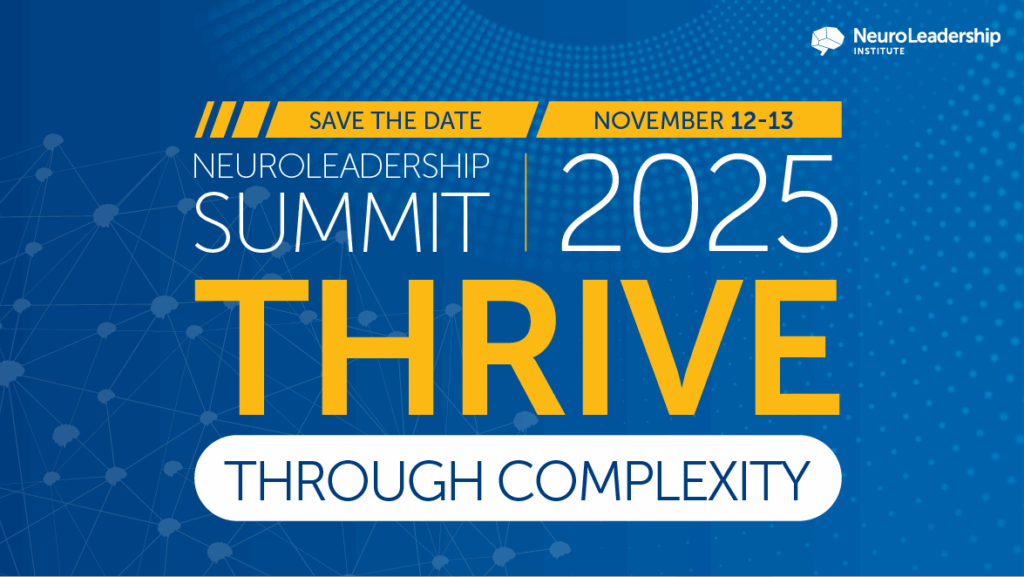
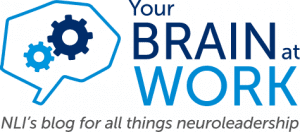
FEATURED INSIGHT
Join us virtually and globally November 12-13 to explore the topics of habit science, AI collaboration, proactive accountability, modern DEI, and more
Read More →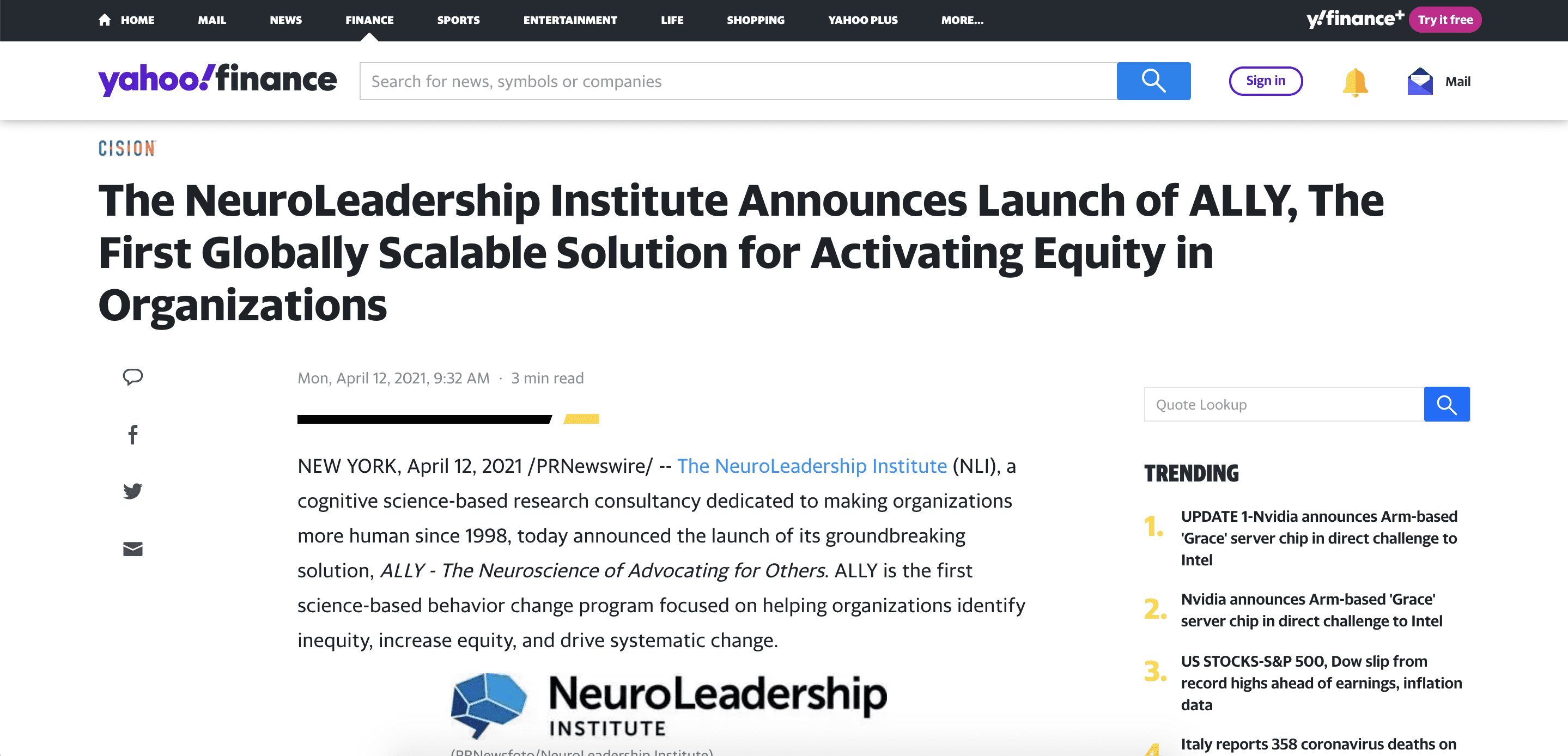
The NeuroLeadership Institute (NLI), a cognitive science-based research consultancy dedicated to making organizations more human since 1998, today announced the launch of its groundbreaking solution, ALLY – The Neuroscience of Advocating for Others. ALLY is the first science-based behavior change program focused on helping organizations identify inequity, increase equity, and drive systematic change.

A few times every year, a major company is in the crosshairs of a larger work culture and burnout debate. It’s been Goldman Sachs many a time before, and it appears to be them again—13 first-year analysts in Goldman’s investment banking unit surveyed themselves about their work hours, which can reach 110 per week, and then organized those concerns into a detailed PowerPoint presentation that has since spilled onto social media. The report even includes bar charts showing the analysts’ deterioration from job stress.
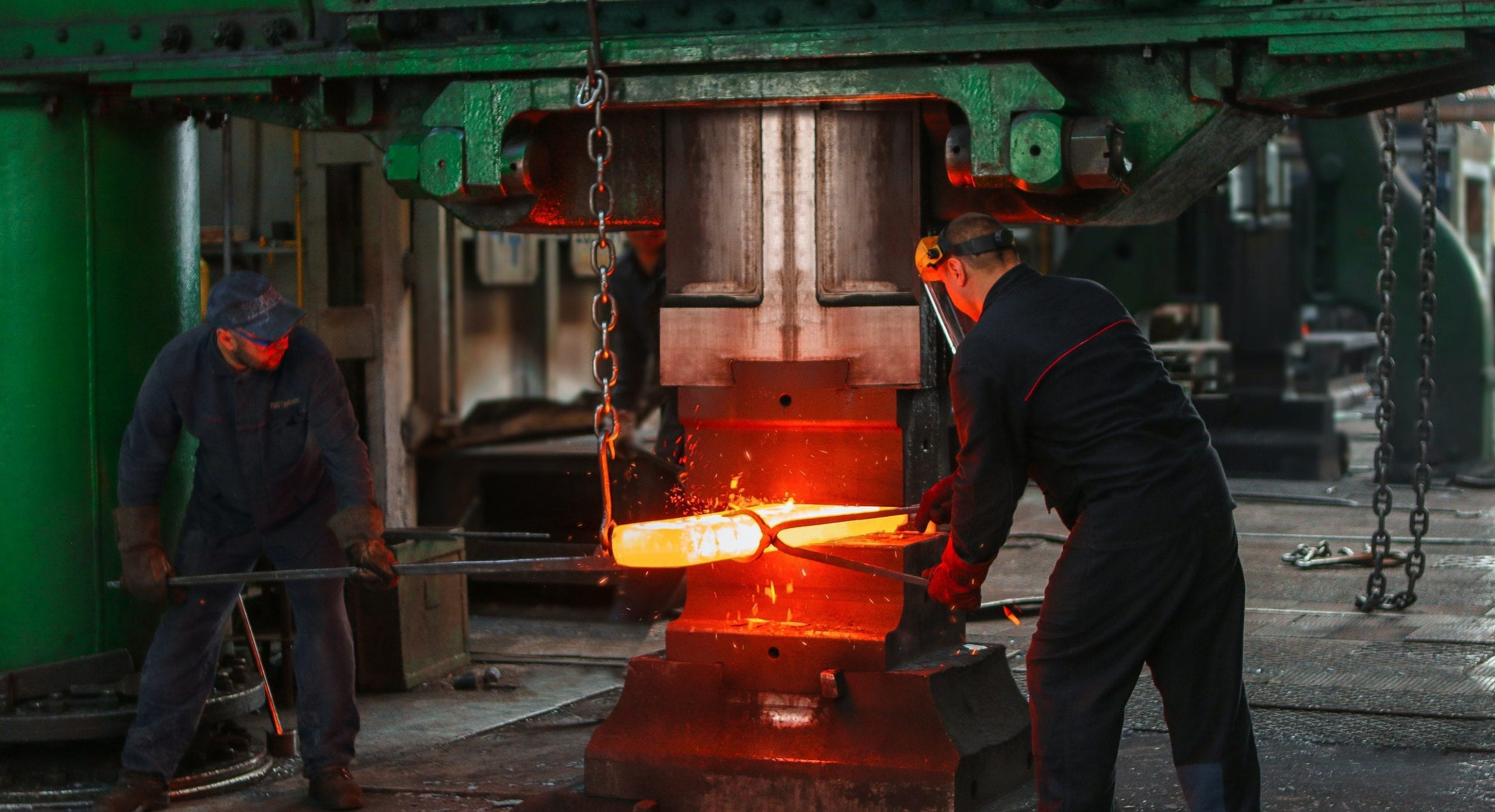
Up to 98% of people have the potential to become allies. To reach that potential, we need to understand what makes a person an ally.

For governments everywhere, agility is essential. But unfortunately it’s not the norm. Growth mindset can help.

People started talking about “moonshots” back in 1949. Back then, the phrase quite literally meant to shoot for the moon—with a spacecraft, that is (eg. the Apollo missions). Since then, the term has become shorthand for an audacious vision paired with an ambitious goal. This type of thinking in the organizational context, popularized by pioneering organizations like Microsoft, Apple, Google and SpaceX, has driven innovation for decades and been the source of countless technological breakthroughs. So it has us thinking: What’s the moonshot for leadership? What do the effective leaders of the future look like? And how do we help today’s leaders get there? In his latest article on Forbes, Dr. David Rock, Co-founder and CEO of the NeuroLeadership Institute, reflects on those questions. David explores the key insights that leaders should embrace and act upon right now to set themselves up for success in the future. Throughout, he explains how science should inform and transform how we think about leadership. Some of the insights David unpacks include: How to leverage the moment to do big things Why leaders should care about humans at levels you never imagined How to embrace hybrid work and autonomy And why leaders should follow the science, experiment, and follow the data To read the full article click here, or to learn more about NLI’s approach to leadership click here.

How does one become an ally? Ultimately, it’s a set of habits that we practice daily. Here’s how you can create and cultivate those habits.

Leadership needs a grand commitment. General Motors (GM), a Fast Company Most Innovative Company, recently announced it will sell only zero-emission vehicles by 2035. The move sparked lots of discussion, largely positive, and other industries—i.e. healthcare—declared they “need their own Mary Barra,” a reference to the GM CEO and her leadership.

We’re adding our voice to the chorus of COVID-at-1 stories, through the prism of organizational learnings and brain science.

As we progress through our careers, we may feel that we’re not qualified for our role-a tendency known as imposter syndrome. Fortunately, there’s a cure.

A new era of corporate leadership is upon us. Now is the time to reinvent your approach to leadership development. Here’s how.
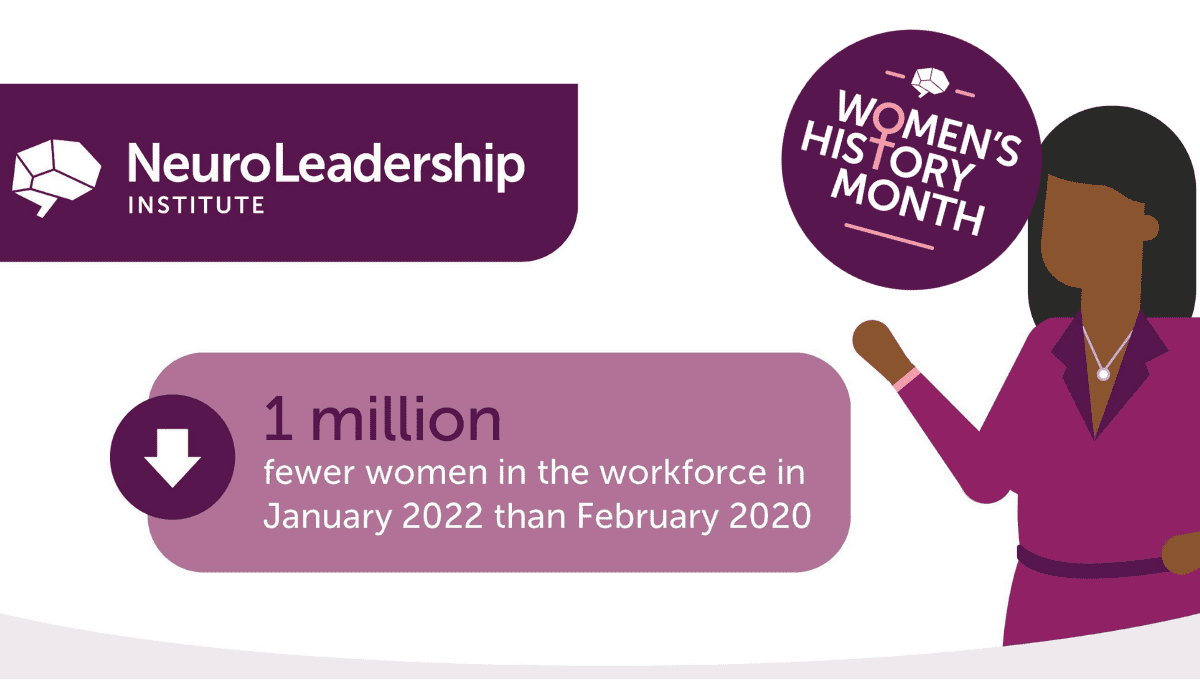
Women in the workplace have made strides in terms of equal pay and climbing the career ladder, but there’s still more work to be done.
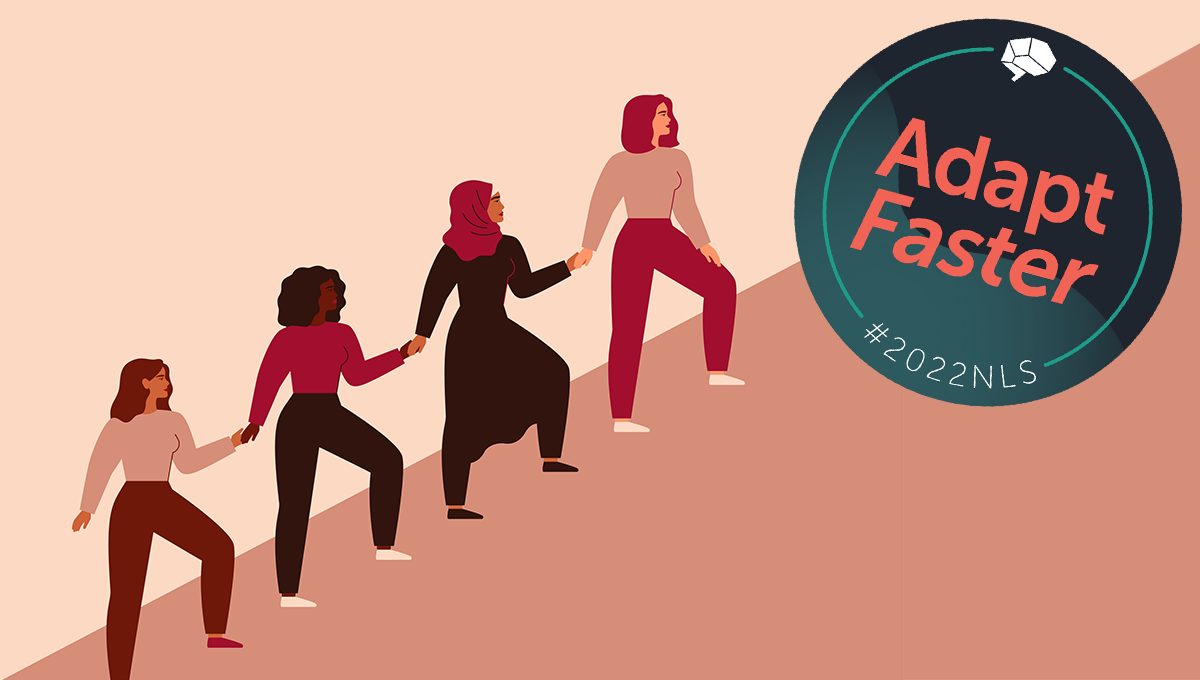
Check out highlights from our DE&I sessions during NLI’s 2022 Summit.
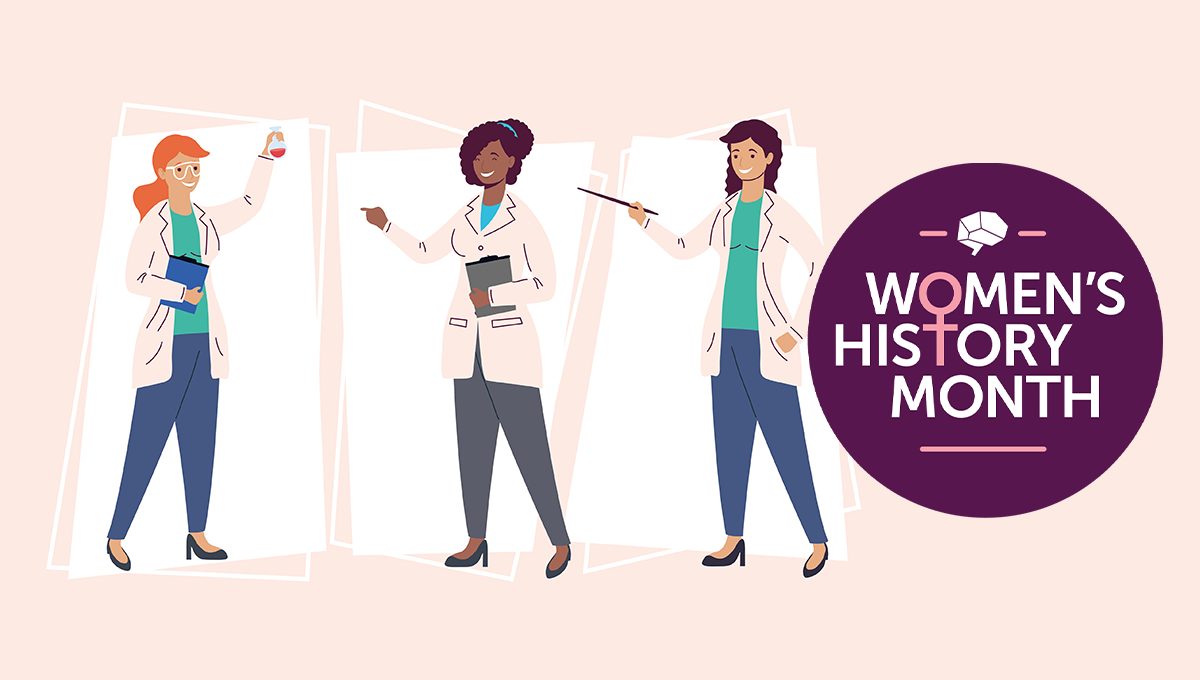
Anecdotal evidence speaks loudly, but here’s what the data says about women in neuroscience and why they’re leaving.
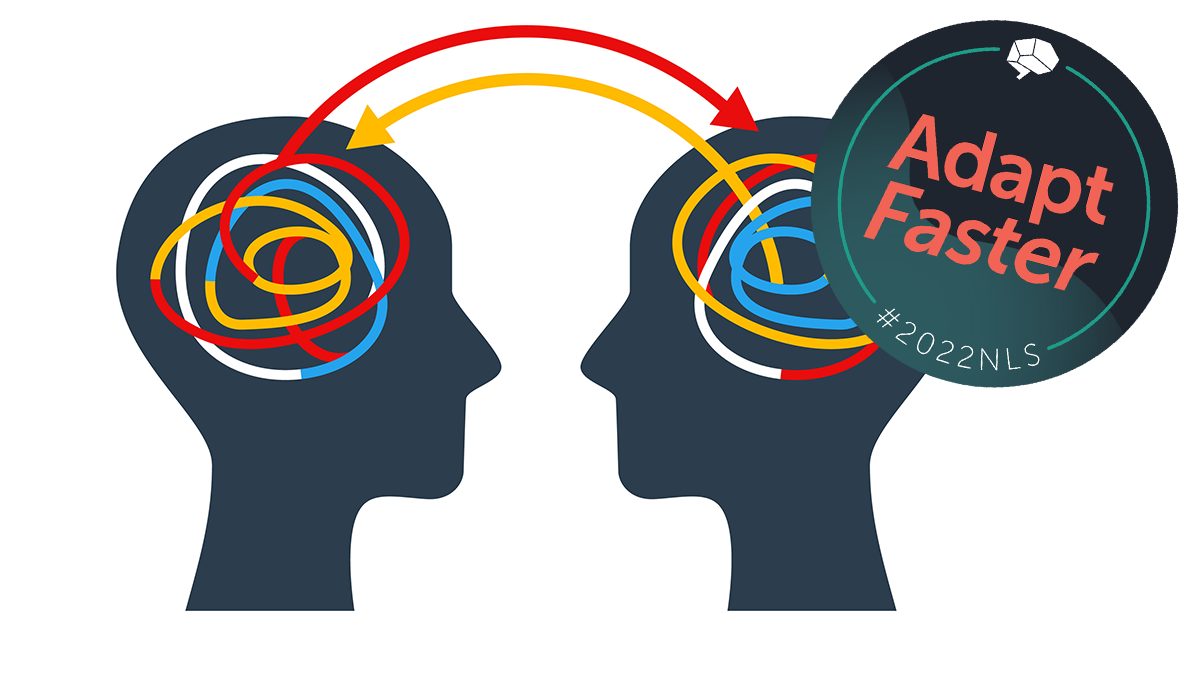
Our 18th NeuroLeadership Summit, featuring Boeing and Procter & Gamble (P&G), included insights about growth mindset, de-escalation, and inclusion.
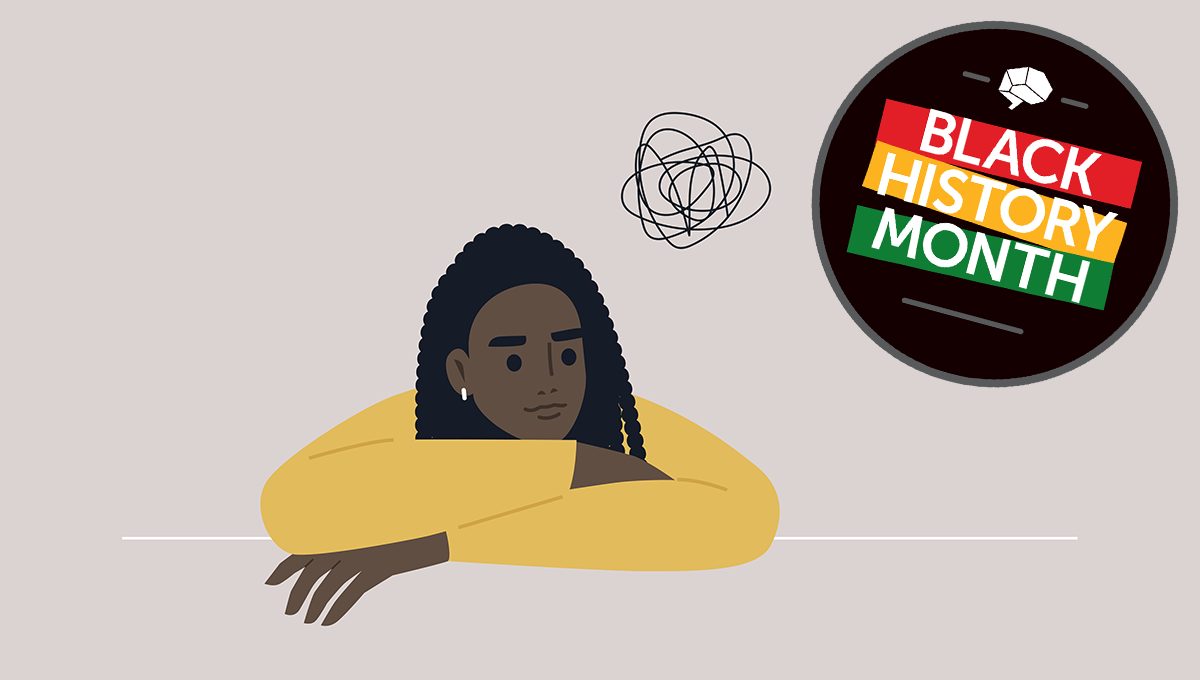
You’ve probably heard about code-switching and why some people do it, but what you may not know is the mental toll it takes.

Join millions of employees in creating culture change at scale by reaching out today.

In 2007, David and Lisa Rock and their team had been working in leadership development and executive coaching for ten years, when David coined the term “NeuroLeadership.”ef

North America
Africa
South America
Asia
Europe
Australia
© NeuroLeadership Institute 2025. All Rights Reserved
This site uses cookies to provide you with a personalized browsing experience. By using this site you agree to our use of cookies as explained in our Privacy Policy. Please read our Privacy Policy for more information.